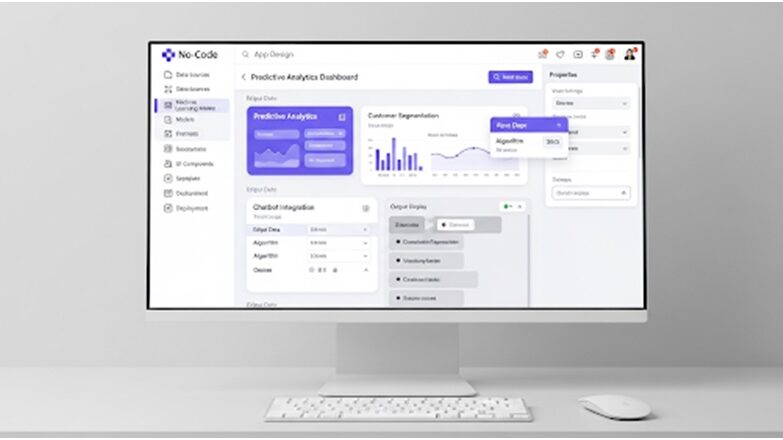Fixed Deposits (FDs) are one of the safest investment options in India, offering guaranteed returns over a fixed tenure. They not only ensure the security of your principal amount but also provide a reliable pathway to grow your wealth without being subject to market volatility. However, understanding how much interest you’ll earn and forecasting your return can often be challenging, especially due to varying FD interest rates across financial institutions. This is where a fixed deposit calculator becomes a useful tool. It simplifies complex interest calculations, ensuring that investors can easily estimate their returns before investing in a fixed deposit scheme.
What Is a Fixed Deposit Calculator?
A fixed deposit calculator is a digital tool provided by banks, financial institutions, and third-party fintech platforms. It allows you to calculate the maturity amount and interest earned on your FD based on variables such as the principal amount, tenure, and FD interest rates. By using this calculator, investors can get an accurate projection of their returns, making it easier to plan their financial goals.
These calculators generally follow the basic mathematical formulas used to determine FD returns, either with simple interest or compound interest.
Types of FD Interest Calculations
There are two primary ways FD interest is calculated:
Simple Interest (SI)
The formula for simple interest is:
SI = Principal × Rate × Time / 100
For example, let’s assume you invest ₹1,00,000 in an FD with an annual interest rate of 7% for 3 years.
SI = ₹1,00,000 × 7 × 3 / 100 = ₹21,000
Here, the total interest earned over 3 years would be ₹21,000, and the maturity amount will be ₹1,21,000.
Compound Interest (CI)
Most fixed deposit accounts use compound interest for calculating returns. The formula for compound interest is:
A = P × (1 + r/n)^(n × t)
Where:
– A is the maturity amount
– P is the principal amount
– r is the annual interest rate (in decimal format)
– n is the number of times interest is compounded annually
– t is the tenure (in years)
Let’s assume you invest ₹1,00,000 in an FD with an annual interest rate of 7% compounded quarterly for 3 years.
Here, P = ₹1,00,000, r = 7/100 = 0.07, n = 4 (quarterly), t = 3
A = ₹1,00,000 × (1 + 0.07/4)^(4 × 3)
A = ₹1,00,000 × (1 + 0.0175)^12
A = ₹1,00,000 × (1.185723)
A ≈ ₹1,18,572
The compound interest earned in this case is ₹18,572, and the maturity amount is ₹1,18,572.
How a Fixed Deposit Calculator Works
A fixed deposit calculator automates the above formulas, eliminating the need for manual calculations. Here’s how it typically works:
- Input Variables: Enter the principal amount, tenure, and the FD interest rate applicable.
- Compounding Frequency: Choose the compounding frequency (e.g., monthly, quarterly, half-yearly, or annually). Most banks in India compound interest quarterly.
- Calculation: The calculator processes the inputs and provides the maturity amount and total interest earned.
Example Using a Fixed Deposit Calculator
Let’s consider an example:
– Principal: ₹5,00,000
– FD interest rate: 6.75% per annum
– Tenure: 5 years
– Compounding frequency: Quarterly
Using the formula for compound interest:
A = P × (1 + r/n)^(n × t)
Here, P = ₹5,00,000, r = 6.75/100 = 0.0675, n = 4 (quarterly), t = 5
A = ₹5,00,000 × (1 + 0.0675/4)^(4 × 5)
A = ₹5,00,000 × (1 + 0.016875)^20
A = ₹5,00,000 × 1.372786
A ≈ ₹6,86,393
The compound interest earned will be approximately ₹1,86,393, and the maturity amount will be ₹6,86,393 at the end of 5 years. The fixed deposit calculator would show this result instantly without requiring any manual computation.
Benefits of Using a Fixed Deposit Calculator
- Accuracy: Minimizes errors in calculating FD returns, ensuring precision.
- Time-Saving: Performs complex calculations quickly, saving investors time.
- Financial Planning: Helps investors compare FD interest rates across institutions to choose the ideal scheme for their requirements.
- Ease of Use: Accessible to both novice and experienced investors, enabled by simple design and function.
Factors Affecting Fixed Deposit Returns
Several factors influence the returns from an FD:
– FD Interest Rates: Different banks and financial institutions offer varying rates that determine your earnings. Higher rates naturally lead to better returns.
– Tenure: Longer tenures often attract higher interest rates, but shorter tenures can provide liquidity.
– Compounding Frequency: The frequency of interest compounding (monthly, quarterly, etc.) impacts how much you earn. More frequent compounding leads to higher maturity values.
– Taxation: Interest earned on fixed deposits is taxable as per Indian Income Tax laws, which can affect your actual gains.
Disclaimer
While fixed deposit calculators are indispensable in simplifying interest calculations, investors must carefully consider all risks and rewards associated with trading in the Indian financial market. The returns from FDs are subject to taxation, and the FD interest rates may vary over time. It’s crucial to evaluate your financial needs, inflationary trends, and alternative investment options before committing to a fixed deposit scheme.
Summary:
A fixed deposit calculator enables investors to estimate their returns accurately by automating interest calculations. With inputs like principal amount, tenure, and FD interest rates, users can determine both the maturity amount and the total interest earned. Fixed deposits may involve either simple interest or compound interest calculations, with most institutions utilizing quarterly compounding. For example, depositing ₹5,00,000 at an annual interest rate of 6.75% compounded quarterly for 5 years culminates in a maturity amount of ₹6,86,393, with ₹1,86,393 earned in compound interest.
This tool’s benefits, including precision, speed, and ease of use, make it crucial for financial planning. However, investors should weigh factors such as taxation, the FD interest rates offered by various institutions, and tenure flexibility before choosing an FD scheme. The calculator streamlines investment planning but calls for thoughtful decision-making in the dynamic Indian financial market. Always assess the broader financial scenario to align investments with personal financial goals.











